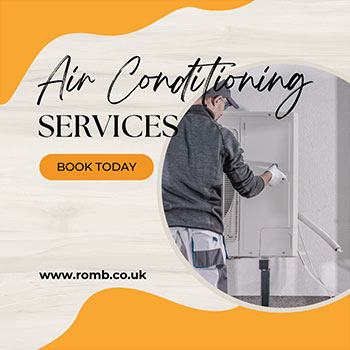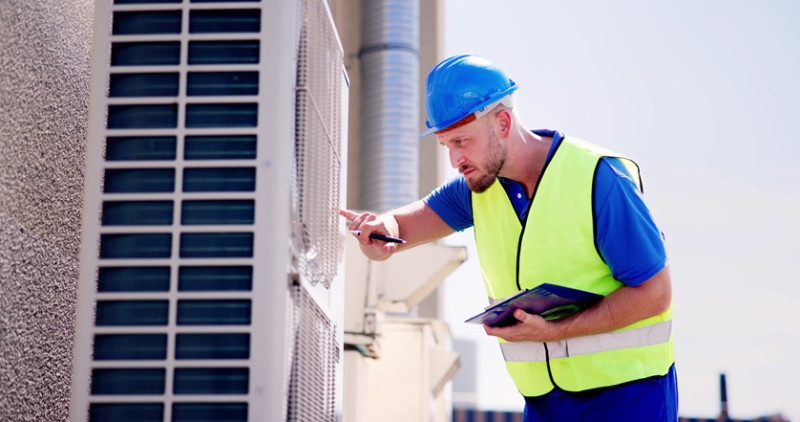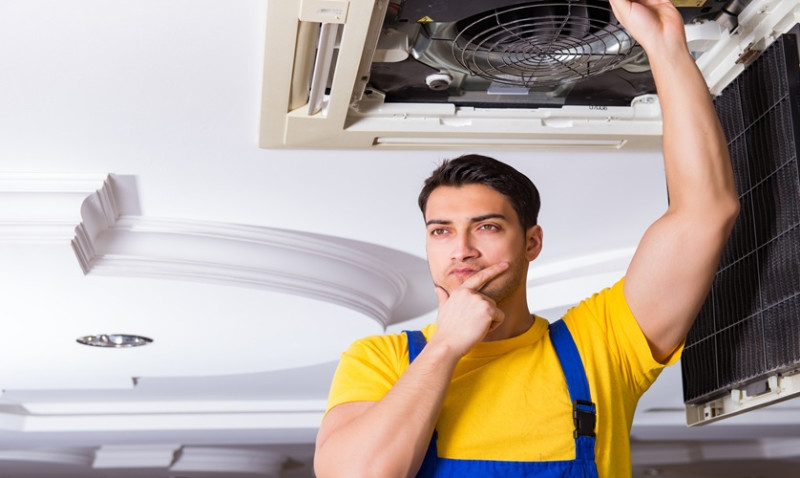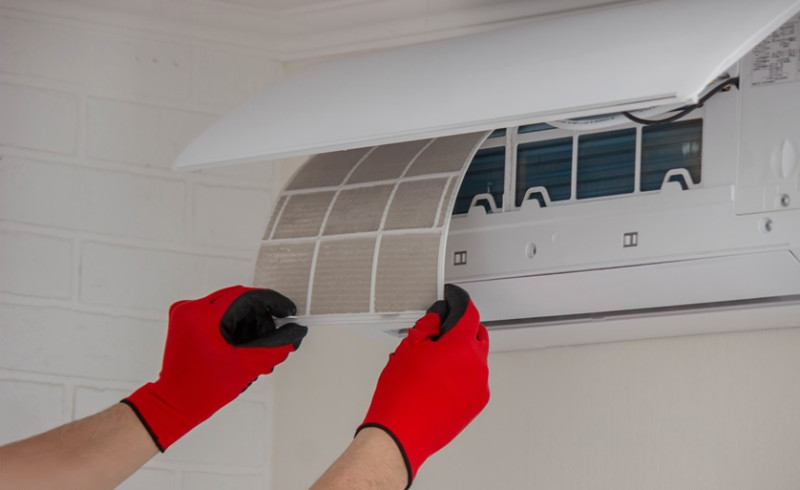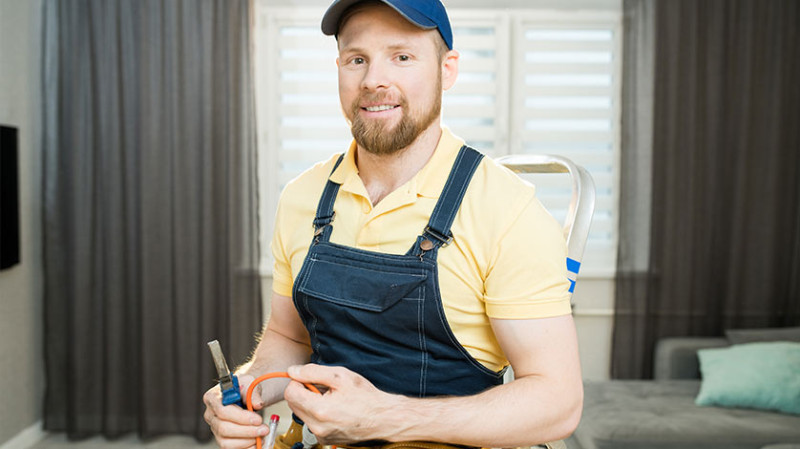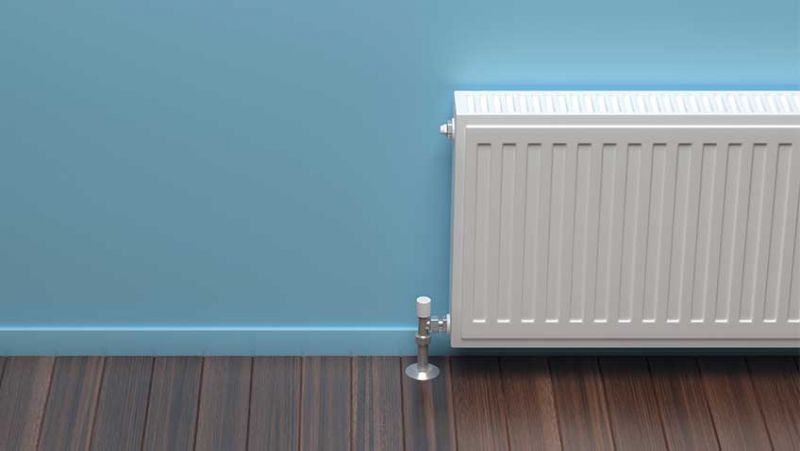
Indoor air quality (IAQ) is critical to our health, comfort, and overall well-being — yet it's often an overlooked aspect of home design or renovation. Whether you’re a homeowner looking to upgrade your living space, a DIY enthusiast tackling your next project, or a trade professional specifying heating, ventilation, and air conditioning (HVAC) systems, focusing on IAQ can make a significant difference.
Modern homes in the UK are built with energy efficiency in mind, but this often means they are more airtight than older properties. While this helps to reduce heating costs, it can lead to a build-up of pollutants, dust, and excess humidity if ventilation and HVAC systems aren’t working efficiently. Here, we explore essential HVAC best practices to support cleaner, healthier indoor air for you and your clients.
1. Regular HVAC System Maintenance
Keeping your HVAC system clean and functioning properly is the foundation of good IAQ. Over time, filters clog, ducts gather dust, and mechanical elements lose their effectiveness. Regular maintenance helps maintain optimal airflow and ensures systems aren’t recirculating contaminants around your home or commercial project.
It’s recommended to have HVAC systems professionally serviced at least once a year, ideally before peak seasons like winter or summer. During maintenance, a certified engineer should inspect the system, clean internal components, check refrigerant levels, and test for any air leaks or issues in ventilation.
For DIYers, monthly visual inspections of accessible parts like air vents and exposed ducting can help identify any issues early. If you notice persistent odours, temperature inconsistencies, or increased humidity, it’s time to book a check-up.
Don’t forget external units either—debris buildup on heat pumps or air conditioning condensers can restrict airflow and reduce system efficiency. Clearing leaves, dust, and vegetation can help prolong the life of your system.
2. Upgrade Air Filters for Enhanced Performance
Your air filter plays a vital role in trapping airborne particles like dust, pollen, pet dander, and even mould spores. In UK homes especially, where central heating is common and windows are often shut for much of the year, having the right filter is crucial.
The Minimum Efficiency Reporting Value (MERV) rating system measures filter effectiveness. For residential use, filters rated between MERV 8–13 strike a balance between airflow and filtration. However, specialised systems for allergy sufferers or homes with pets may benefit from higher ratings.
Changing filters every 1–3 months is advised, particularly in high-use seasons or in urban areas where air pollution levels outside the home can be higher. This simple upgrade can significantly reduce indoor pollutants and promote better airflow.
Trade professionals should look to specify appropriate filtration at the design stage of construction or renovation, adapting MERV ratings to suit room usage—for example, using higher-performance filters in kitchens or bedrooms.
3. Introduce Fresh Air with Mechanical Ventilation
Fresh air is essential, but in many UK homes, opening a window isn’t always an option due to noise, weather, or air pollution concerns. Mechanical ventilation systems offer a reliable and energy-efficient way to introduce fresh air and maintain IAQ.
Heat Recovery Ventilation (HRV) or Mechanical Ventilation with Heat Recovery (MVHR) systems are particularly popular in passive house designs and newer constructions. These systems extract stale indoor air while bringing in pre-warmed outdoor air, maintaining your home’s temperature and reducing energy waste.
Even simpler systems, like trickle vents integrated into windows or Positive Input Ventilation (PIV) systems, can make a tangible difference in homes prone to condensation or mould growth.
Architects and homebuilders are advised to incorporate MVHR systems early in the project lifecycle, especially in airtight and energy-efficient new builds, to prevent IAQ issues down the line.
4. Use Smart Thermostats to Manage Humidity and Ventilation
Smart thermostats and HVAC controllers allow you to fine-tune your heating, cooling, and ventilation schedules for improved IAQ alongside comfort and energy savings. Many smart systems can integrate humidity sensors and indoor air quality detectors, allowing your home to self-adjust for fresher, cleaner air.
High indoor humidity above 60% can encourage mould growth and increase the circulation of allergens like dust mites. Conversely, overly dry air can irritate the skin, eyes, and respiratory tract. A smart thermostat can adjust your HVAC operation to maintain ideal indoor humidity levels between 30–50% all year round.
For property developers or landlords, installing smart HVAC systems can also reduce maintenance calls and energy consumption while offering tenants better living conditions and peace of mind.
5. Seal Ducts for Better Air Distribution
Leaky ductwork can significantly lower your HVAC’s efficiency and introduce contaminants into your air supply. In older UK properties with retrofitted ducting or exposed runs in lofts and basements, sealing ductwork can dramatically improve IAQ and thermal comfort.
Common signs of duct leakage include uneven heating and cooling, hissing sounds, or high energy bills. Sealing ducts with either mastic sealant or metal-backed foil tape is a relatively simple but highly effective DIY fix, although professionals can also perform pressurised duct sealing for more comprehensive results.
This upgrade is especially important for tradesmen working on Victorian or Edwardian homes being retrofitted with new HVAC systems. Addressing duct leaks ensures you realise the full benefits of modern heating and cooling technology.
6. Remove and Isolate Pollutant Sources
While HVAC systems help filter and circulate air, it's crucial to address where pollutants are coming from in the first place. Volatile Organic Compounds (VOCs) from paints, adhesives, cleaning products, and off-gassing furniture can significantly degrade IAQ, especially during or after redecorating.
Opt for low-VOC or VOC-free paints, varnishes, and sealants during renovation projects. When installing new furnishings, allow for a few days’ airing out in a well-ventilated room before settling them into highly used spaces.
Local exhaust systems, like cooker hoods or bathroom extractor fans, should vent directly outside — not into ceiling voids or lofts. This helps remove moisture and odours directly at the source, preventing build-up and reducing the burden on your main HVAC system.
Designers working on interior refurb projects should always specify materials with low emissions and ensure proper ventilation strategies are included as part of the specification package.
7. Monitor and Test Indoor Air Quality
Without testing, poor IAQ can go unnoticed until health issues arise. Using indoor air quality monitors is a proactive way to know precisely what you're breathing. These devices often measure pollutants like carbon dioxide (CO₂), volatile organic compounds (VOCs), particulate matter (PM2.5), and humidity levels.
Many smart home systems now integrate IAQ monitoring into wall-mounted controllers or smartphone apps, giving you real-time data and recommendations.
A table of ideal IAQ levels for UK homes is shown below:
| Air Quality Parameter | Ideal Range | Potential Issues if Too High |
|---|---|---|
| CO₂ | 400–1,000 ppm | Fatigue, headaches, drowsiness |
| PM2.5 (Particulate Matter) | 0–12 µg/m³ | Respiratory irritation, asthma aggravation |
| Relative Humidity | 30%–50% | Mould growth, dust mites, dryness |
| VOCs | < 0.5 mg/m³ | Eye/nose irritation, headaches |
Homeowners and professionals alike can use this information to guide system upgrades and lifestyle changes, ensuring safer and more comfortable environments.
Final Thoughts
Indoor air quality is not a luxury — it's key to a healthy home. Whether you're replacing a heating system, planning a home extension, or building something new from the ground up, integrating HVAC best practices focused on excellent IAQ will pay off long-term in well-being, comfort, and energy savings.
For UK homeowners and professionals in architecture and design, this means staying updated with technology, materials, and approaches that promote clean, healthy air indoors. Combining properly maintained HVAC systems with filtration, smart controls, and smart construction choices makes creating a healthier home easier than ever.
If you're planning your next renovation or new build, connect with HVAC specialists who understand UK regulations and can help you tailor solutions that improve indoor air while meeting today’s energy and safety standards.
